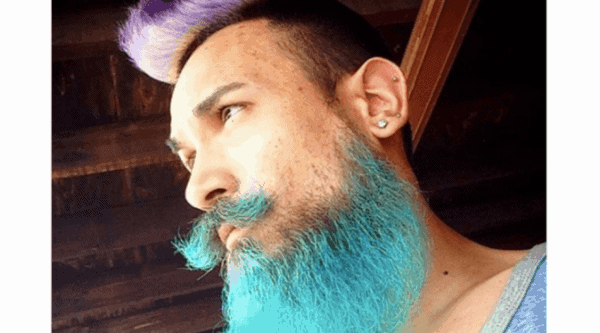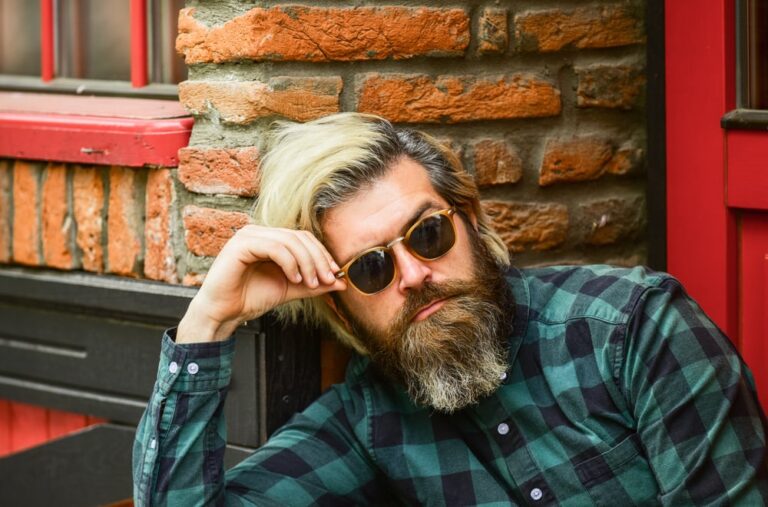How to Dye Your Beard Grey without Staining Skin
Are you worried about how to dye a beard grey? Are you prowling drug stores looking for your perfect beard match? If you’re thinking of dyeing your beard grey and don’t want to stain your skin, here are some steps to follow and things to consider before you take the plunge.
How to Dye Beard Grey without Staining Skin
So you want to dye your beard grey. Luckily, most beard dyes have the same simple steps to get you the shade you prefer.
Step 1: Wash Your Beard with Beard Shampoo
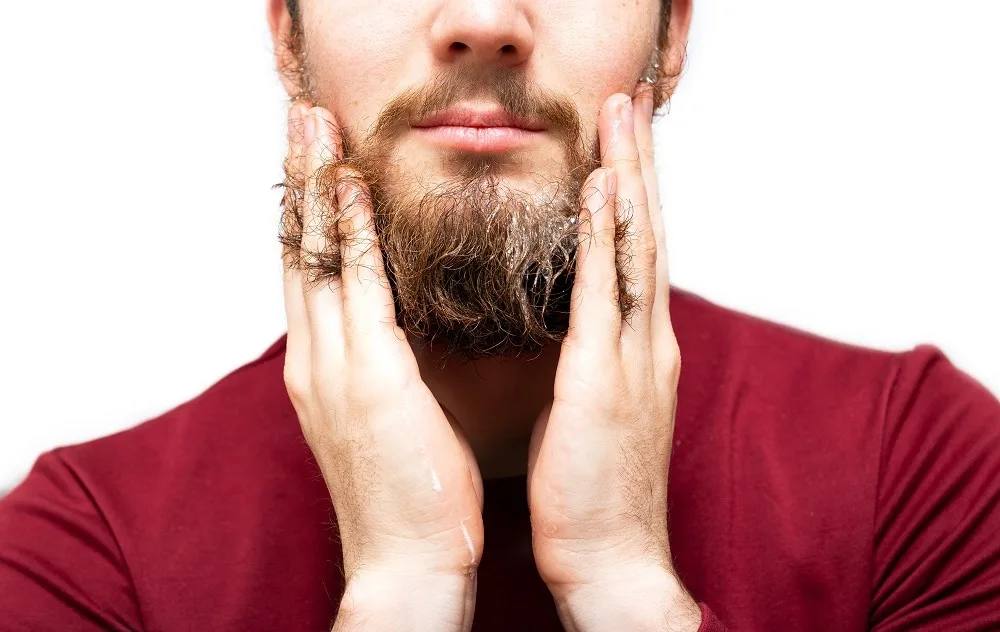
Using a coin-sized bit of beard shampoo, lather it over your beard. Be sure to massage the skin underneath, as beard shampoos work to protect both your facial hair and its bedrock.
Using a beard shampoo will help remove any dead skin beneath your beard and help keep your hair follicles healthy.
Some believe that washing your beard will strip it of natural sebum oils that can help dyes keep their hold for longer. However, it’s a necessary step if you want to shape up your beard first.
Step 2: Rinse off and Dry Properly
Thoroughly rinse the shampoo out of your beard. You don’t want any dirt particles or soapy bubbles trapped next to your skin, as this could encourage acne outbreaks.
Thoroughly drying your beard with a blow-dryer will make it ready to hold a grey color. If it’s still wet, it could be hard to get the proper shade you want.
Step 3: Trim or Shave to Finalize Beard Shape

Cutting your beard after it’s dyed is a waste of dye, and it can also reveal mistakes. Trimming and shaving beforehand will give you the style you want while also leaving your beard hairs more open to holding color.
However, it’s important to note that shaving too short will make dyeing difficult. Try to keep your beard nice and thick, with the majority of hairs two centimeters or more.
Step 4: Apply the Barrier to Prevent Dye from Staining Your Skin
Staining skin is a hassle as you’ll get beard dye again off the skin. So, prevent it by adding a barrier. Using Vaseline or mineral oil, gently coat the skin around your beard. These substances will make sure the dye doesn’t end up beyond your trim-cut lines. They’re also less likely to irritate your skin if you are sensitive.
Step 5: Mix and Prepare Dye
Like many hair dyes, beard dyes use a developer that you need to mix with the color. You can do this in a small dish with the application tool. A developer will help the color stick better, especially if you’re going lighter.
Step 6: Apply Dye to Your Beard
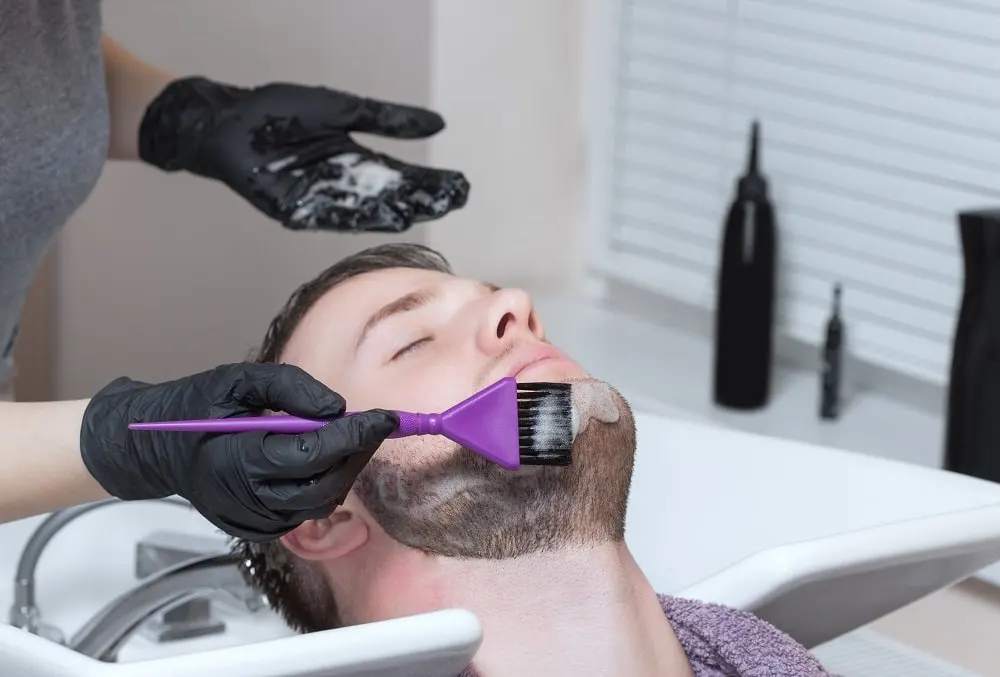
Using an applicator, an old toothbrush, or even a fine-toothed comb, coat your beard with the dye. You can use up and down motions to place the dye.
The deeper into the beard you go, the more likely the dye will stay, and your color will look full and rich. However, be careful not to get the dye on your skin beneath the beard, as this will stain, and you won’t be able to get rid of it for ages.
Step 7: Let the Dye Settle and Shine!
Most beard dyes will instruct you to leave it in until you’ve reached your desired tint, after which you can rinse the excess dye away. Once you’ve done this, pat your beard gently dry.
Afterward, it’s ready to show off!
Precautions
- An initial reaction test will prevent allergic reactions
- A color test will show the exact shade when dyeing your beard grey
- Wear gloves and old clothes, so drips don’t stain you
- Read product instructions for how to dye beard grey
Dyeing your Beard Grey: Pros and Cons
Should you or shouldn’t you?
Pros
- Boosts your confidence
- Uniforms your beard color.
- Stylish grey beards are more attractive to women.
- Can make you look younger (for white beards)
- Can make you look more mature (for darker beards)
Cons
- Messy
- Needs constant upkeep
- Can be harsh on your beard and face
Pick the Right Grey Beard Dye: Not All Products Are Equal
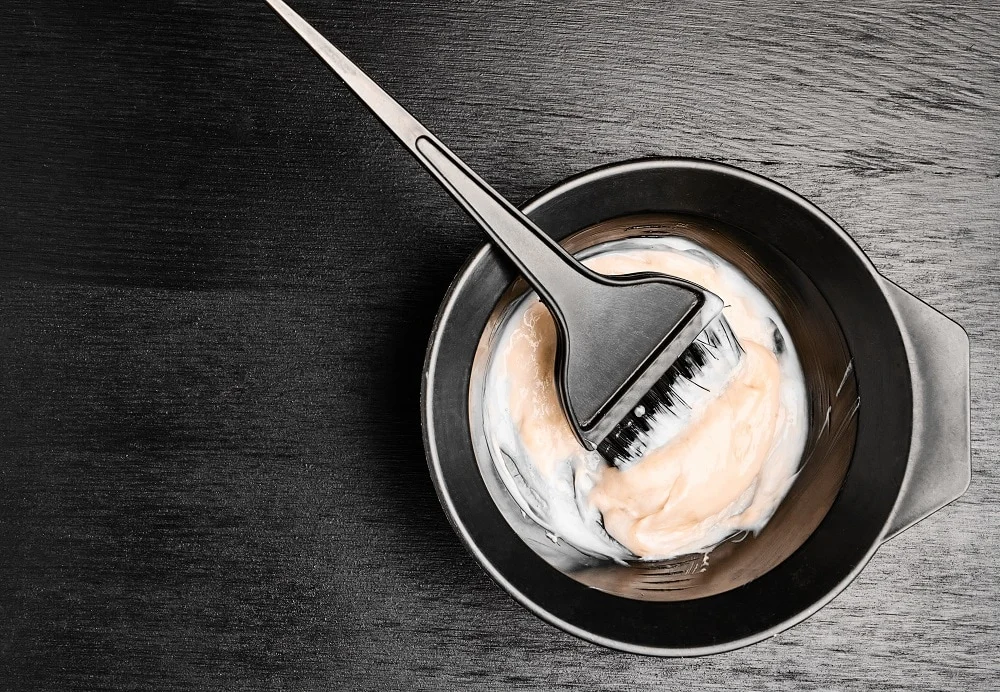
Many products promise to show you how to dye a beard grey, but not all of them will do it to your standards. Some things to think about before you buy include ingredients, price, and application.
Ingredients
Many of the more popular brands use harsh chemicals that can result in allergic reactions and various skin conditions. One of these chemicals is p-Phenylenediamine (PPD), which is a very common dyeing agent for leather, hair dye, and printer ink.
If your beard dye contains PPD or similar chemicals like ammonia, you probably shouldn’t use it. At the very least, you need to do a reaction test beforehand to see if your skin will react.
Lasting Color
A significant consideration is how long the dye lasts and how much time you’re willing to spend reapplying it. This also depends on how fast your beard grows. So, if your color is fading fast, and it’s just not worth it to go through a messy application, maybe it’s time to switch brands.
Application
How easy is the brand to apply? One that comes with its own applicator and doesn’t drip is something to look out for. A crème application is also preferable to a dye that’s too watery because it’ll surely get everywhere.
Price
This probably goes without saying, but don’t buy it if it’s beyond your price range. There are plenty of inexpensive, worthwhile beard dyes out there that just need a little research to find.
Then again, if you’re prepared to pamper your beard, a more expensive brand with a little more care might be right for you.
FAQs
What’s the Difference Between Beard Dye and Temporary Beard Color?
Beard dye is permanent or semi-permanent, meaning it will stay in the beard until it is grown out. It can stain skin and is usually a big undertaking to apply. Some dyes look too artificial or damage your hair follicles, unlike temporary brands.
Most temporary beard colors will come off in the shower or even if you sweat too much. However, temporary color is easier to apply and can make your beard look fuller or healthier.
Are Grey Beards Trendy in 2024?
Grey beards are still hanging on in the top facial hair trends. More men are rocking the “mature” look than in previous years, and the fad has yet to go away.
How to Stop Beard from Greying?
For the most part, a greying beard is a natural part of aging and can’t be stopped. However, premature greying might occur if you’re under a lot of stress or have bad health habits or diet. Making healthier choices could potentially reverse premature grey in your beard, but it’s not guaranteed.
If I Dye Some Part of My Beard Grey, Will It Have Any Side Effects to Other Parts?
Dyeing part of your beard won’t change the rest of it. Only the area that you touch should be affected. However, partial dyeing might affect the skin underneath your beard if you have an allergic reaction.
Can B12 Reverse Grey Beard?
Sometimes going grey is a sign of vitamin B12 deficiency. When this is the case, it is possible to reverse grey hairs in your beard by taking B12 supplements. If this is not the cause, it probably won’t help.


